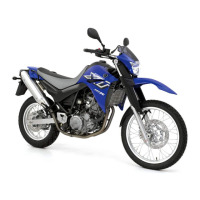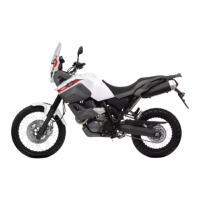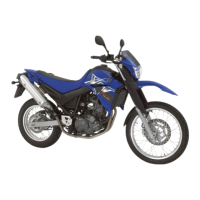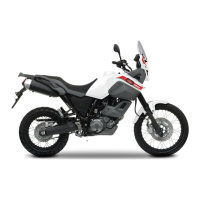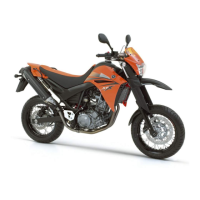
 Loading...
Loading...
Do you have a question about the Yamaha XT660R and is the answer not in the manual?
| Displacement | 660cc |
|---|---|
| Bore x Stroke | 100.0 mm x 84.0 mm |
| Compression Ratio | 10.0:1 |
| Fuel System | Electronic Fuel Injection |
| Ignition System | TCI |
| Starter System | Electric |
| Transmission | 5-speed |
| Final Drive | Chain |
| Rear Suspension | Swingarm |
| Front Tire | 90/90-21 |
| Rear Tire | 130/80-17 |
| Length | 2, 240 mm |
| Width | 865 mm |
| Height | 1, 230 mm |
| Seat Height | 865 mm |
| Wet Weight | 181 kg |
| Fuel Capacity | 15 liters |
| Lubrication System | Dry sump |
| Engine Type | Liquid-cooled, 4-stroke, SOHC, 4-valve |
| Front Suspension | Telescopic fork |
| Front Brake | Single disc, 298 mm |
| Rear Brake | Single disc, 245 mm |
| Maximum Power | 35 kW (48 PS) @ 6, 000 rpm |
| Maximum Torque | 58 Nm @ 5, 250 rpm |
General advice on safe motorcycle operation, accident prevention, and operator responsibility.
Importance of helmets, face shields, goggles, jackets, boots, and gloves for safety.
Warnings about modifications affecting safety and legality, and guidelines for adding cargo.
Precautions related to gasoline flammability and exhaust fumes.
Explains the vehicle's anti-theft immobilizer system, keys, and indicator light.
Describes the multi-function display features, including speedometer, odometer, and tripmeters.
Lists essential pre-ride checks for fuel, oil, coolant, brakes, tires, and other vital systems.
Conditions for starting, safety checks, and procedure for starting the engine.
Explanation of gear shifting, neutral position, and associated cautions.
Details maintenance intervals for various components based on odometer reading and time.
How to check engine oil level and perform oil and filter changes.
Information on tire inspection, air pressure, and minimum tread depth.
Checking brake pads, rear brake light switch, and brake fluid level.
Introduction to troubleshooting and charts for common engine problems.


